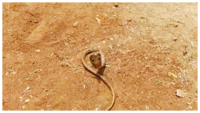Researchers look for drugs to keep HIV dormant
The human immunodeficiency virus infects the cells that can either exploit them to start making more copies of itself or remain dormant, a phenomenon called latency. Researchers during a recent study found a way to look for chemicals that can keep the virus suppressed into its dormant state. The findings of the study were published in a new paper, Proceedings of the National Academy of Sciences. "The current drug treatments block healthy cells from becoming infected by the virus," said Yiyang Lu, a PhD student in the Dar lab at the University of Illinois Urbana-Champaign. "The latent reservoir poses a bigger problem because it can start producing the virus at any time. Consequently, patients have to remain on antiretroviral therapy all their lives to prevent a viral rebound." So far, there are two types of drug treatment strategies: shock-and-kill, where reactivated cells are killed due to HIV, and a second drug cocktail prevents other cells from being infected, or block-and-lock, which forces the virus into a deep latent state so that it does not reactivate again. The problem with the first approach is that there are always some leftover reservoirs that do not get activated. The problem with the second approach, which the researchers are trying to solve, is that there aren't many drugs that have been discovered. Since the transition from latency occurs randomly, measuring the fluctuations in gene expression can provide more coverage than the average gene expression.
 00:46
00:46 00:46
00:46 03:40
03:40 01:20
01:20 02:46
02:46